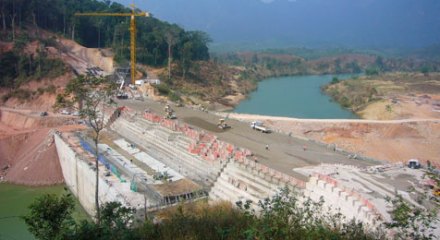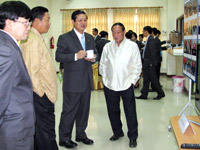Luang Namtha hydro plant to trial energy generation
Luang Namtha hydro plant to trial energy generation
The construction of a small scale hydropower plant on the Long River in Long district, Luang Namtha province, is progressing well and is now about 95 percent complete.

“We will start a trial energy generation within the next two months,” Nam Long Power Co Ltd President Mr Bounleuth Luangpaseuth said yesterday.
“Currently we are storing water to begin the electricity generation trial by June,” Mr Bounleuth said.
He said the company plans to run the trial generation to see if all the systems within the power plant are working well. There will also be officials from the Ministry of Energy and Mines who will come to observe and check the generation to see if it is possible to approve it for supply.
“After we get the approval, we will set the date for commercial operations and supply the generated electricity to Electricite du Laos (EDL),” he said.
Nam Long hydropower plant construction began in December 2011. The project is worth about 109 billion kip (US$13.7 million), and is a joint investment between Luangpaseuth Construction Sole Co Ltd, which holds 80 percent, and EDL, which holds the remaining 20 percent.
The plant will have an installed capacity of 5 megawatts (MW) and is forecast to achieve annual electricity generation of about 37 million kWh. It will help 85 percent of Luang Namtha's population to gain access to electricity by 2015.
The Nam Long Power Co Ltd was established in 2009 and will own the project for 30 years, after which it can extend the agreement one time.
A feasibility study showed large interest in the project as a local energy source for Luang Namtha, with talk being that it may one day replace the need for imported electricity from China.
The Nam Long project is a run-of-river scheme, meaning power generation will depend on the immediate river water flow. The dam or weir is only 6.5 metres in height.
The project is free of the environmental impacts associated with large-scale projects due to its run-of-river design, which does not require a large dam or storage reservoir.
Instead, run-of-river projects generate electricity by diverting only part of the stream. This produces relatively little change in the stream channel and flow, and minimises the impact on fish migration, water quality, and wildlife habitats.
The government is promoting the rapid development of small and medium d power plants for local supply to reduce the need for imported electricity.
vientiane times















